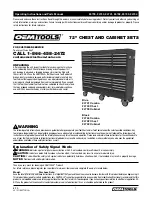
Table 66. Comparison of data migration options (continued)
Type
Example
Advantages
Disadvantages
Remote Copy
Synchronous Mirror
(Metro Mirror);
Asynchronous Mirroring
(Global Mirror and
Global Copy)
Operating system
independent
Like storage device
types needed
Third party
software
packages
Data Migration (XoSoft);
Backup /Restore (Tivoli,
Legato, Veritas)
Some have little
application service
interruption,
standard utilities
Cost of software;
some have high
application service
interruption
Third party
migration
appliances
IBM San Volume
Controller, DataCore
SANsymphony
Multiple
heterogeneous
storage venders
supported; migration
cycles offloaded to
appliance
Cost of migration
appliance / service,
application
disruption to install
/ remove appliance
Besides these two sets of general considerations, there are a few more specific
considerations and hints to review before finalizing your data migration method.
Some apply to your environment and some do not. Also keep in mind that data
migration is a service offered through IBM Global Services. Contact your IBM
Representative for more information.
Select a migration method by your operating system:
v
Is it UNIX based? Consider some variation of a logical volume manager.
v
Is it a System z? Consider IBM System Storage Global Mirror, Remote Mirror
and Copy.
v
Is it z/OS? Consider DFDSS, though there are many choices.
v
Is it VM? Consider DASD Dump Restore or PTAPE.
v
Is it VSE? Consider the VSE fastcopy or ditto commands.
Notes:
v
AIX
®
and HP-UX 10.xx ship with logical volume management (LVM)
software as part of the base operating system. LVM provides complete
control over all disks and file systems that exist on an AIX system.
HP-UX has similar volume management software.
v
Sun Microsystems has a basic volume management product called
Solstice, which is available for the Solaris systems. You can also purchase
the Veritas Volume Manager (VxVM) and Veritas File System (VxFS) as
optional products for Solaris.
v
Linux systems also use the LVM
When replacing existing storage, partition the storage so that its virtual disks are
similar in configuration to the disk drives that they are replacing. New
configurations must be large enough to accommodate the existing data.
You might want to take advantage of this opportunity to do some remapping. The
allocation and distribution of data does not have to be a straight one-to-one
relationship, although that is possible. For instance, you can take advantage of
using a maximum of 255 logical subsystems whereas the prior limitation was 32
logical subsystems.
182
Introduction and Planning Guide
Summary of Contents for DS8700
Page 2: ......
Page 8: ...vi Introduction and Planning Guide...
Page 10: ...viii Introduction and Planning Guide...
Page 20: ...xviii Introduction and Planning Guide...
Page 22: ...xx Introduction and Planning Guide...
Page 44: ...22 Introduction and Planning Guide...
Page 142: ...120 Introduction and Planning Guide...
Page 160: ...138 Introduction and Planning Guide...
Page 212: ...190 Introduction and Planning Guide...
Page 218: ...196 Introduction and Planning Guide...
Page 224: ...202 Introduction and Planning Guide...
Page 242: ...220 Introduction and Planning Guide...
Page 254: ...232 Introduction and Planning Guide...
Page 255: ......
Page 256: ...Printed in USA GC27 2297 09...
















































